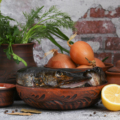Each spring, as the Christian liturgical calendar moves into Lent, Malta undergoes a subtle but perceptible transformation. Despite the archipelago’s dense historical layering of religious, cultural, and culinary influences, it is during this season of abstention that older customs resurface with renewed clarity. Among the most distinctive expressions of Maltese Lenten heritage is Kwareżimal, a spiced, almond-based sweet that tells a deeper story about endurance, adaptation, and collective memory.
Lent in the Maltese cultural landscape
Lent in Malta reveals centuries of Mediterranean tradition shaped by Roman Catholic discipline, but also by regional pragmatism. Historically, the 40 days leading to Easter—commemorating fasting and reflection—were marked by dietary restrictions that excluded meat, dairy, and eggs. These constraints shaped a repertoire of Lenten foods rooted in simplicity but rich in symbolic and sensory value.
Local observance included special liturgies, the covering of statues, and public processions—yet it is in the domestic realm, particularly the kitchen, where Maltese Lenten identity perhaps crystallized most vividly. As with many Mediterranean islands, resourcefulness in the face of scarcity created a unique culinary language. Kwareżimal emerged from this landscape: a pastry without butter, milk, or eggs, yet robust in flavor and meaning.
Kwareżimal: Etymology and evolution
The term Kwareżimal derives from the Latin Quadragesima, meaning “fortieth,” an obvious reference to the forty days of Lent. Its earliest forms can be traced to medieval culinary practices across Europe, where Lenten sweets relied on nuts, honey, and spices instead of restricted ingredients during the season. In Malta, Kwareżimal likely developed through a synthesis of Sicilian and North African influences, adjusted to local produce and the rhythms of island life.
Traditionally, Kwareżimal is prepared with ground almonds, flour, citrus zest, and a blend of warming spices such as cinnamon and cloves. It is lightly sweetened—originally with carob syrup or honey—and garnished with chopped nuts, typically almonds or hazelnuts. Orange blossom water or rose water is sometimes added—a faint echo of Arab culinary memory embedded in Maltese foodways.
The texture is dense and slightly chewy, often shaped into oblong forms and scored with decorative cross-hatching. Although it was once reserved strictly for Lent, today Kwareżimal is available throughout the season and even beyond—an evidence of its enduring popularity.
A palate of restraint
The taste of Kwareżimal is not indulgent in the modern sense. Its sweetness is restrained, the spice profile delicately evocative rather than overpowering. This balance underscores a key aspect of Maltese Lenten food: the cultivation of sensory satisfaction within a framework of self-denial. Dishes like Brodu (a meatless vegetable broth) and Froga tat-Tarja (a simple vermicelli omelette often adapted to omit eggs during strict fasting) accompany Kwareżimal on Maltese Lenten tables.
This restraint also extends into the rhythms of daily life. Historically, communities adjusted work routines, social gatherings, and entertainment in accordance with the Lenten calendar. Processions such as the Via Sagra (Stations of the Cross) and Ġimgħa l-Kbira (Good Friday commemorations) infuse public space with solemnity. The restraint in flavor and mood echoed a broader ethic of contemplation.
From devotion to heritage
Today, Kwareżimal continues to function as a vessel of cultural and religious transmission across generations. Bakeries across the islands reintroduce it each spring, often adhering to traditional recipes with small variations. Some versions now incorporate dark chocolate or extra citrus—a matter of both innovation and nostalgia.
Importantly, Kwareżimal does not rely on sacred symbolism alone to justify its place in Maltese culture. It is both a vessel of faith and a remnant of shared experience—of seasons, scarcity, and seasonal abundance. Its ingredients are drawn from what was historically available, affordable, and permitted. Its endurance speaks both doctrine and to the capacity of food to encode values: moderation, resilience, and communal identity.
The presence of Kwareżimal in Maltese homes and bakeries reveals how certain traditions endure through repetition. Its modest ingredients and unmistakable aroma speak to an older rhythm of time—when seasons were marked by taste as much as by weather or calendar.
In a contemporary context, where Lent may carry different meanings for different people, Kwareżimal continues to resonate. It reflects a mode of living that values resourcefulness, memory, contemplation, discipline, and cultural continuity. Whether eaten as part of a fast or simply as a seasonal treat, it offers a sensory link to Malta’s layered past—quiet, resilient, and deeply rooted.





